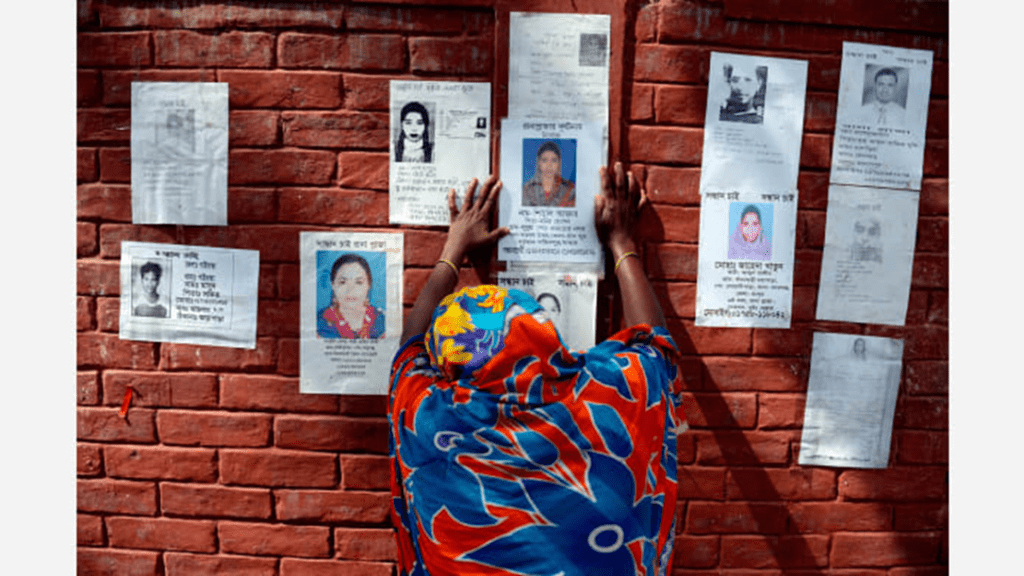-By Ankita Dutta
On Monday, it will be ten years since the most catastrophic textile factory tragedy in history. More than 1100 persons were slain, the most of whom were women. Over 2,500 people were also hurt. While businesses on the building’s bottom levels had ceased operations when cracks in the structure became apparent a day prior to that, thousands of factory workers were compelled to return on the day of the collapse, either directly by their superiors or indirectly by the circumstances, to earn a day’s wage, despite many of them raising concerns.
The fall was caused by vibration from diesel generators that were turned on after a power outage. However, later investigations showed a vast list of errors, oversights, and corruption at nearly every point of the seven-year-old building’s life, according to organisations such as the global NGO Transparency International.

Rana Plaza collapsed due to the use of poor materials and the addition of extra stories to expand the project beyond its authorised design on the site of an enclosed pond. It collapsed because officials allowed the building, which was initially intended for commercial use, to be transformed to industrial use and inhabited by five garment companies. It failed because previous audits were insufficient, and warnings were disregarded or dismissed.
Following the fall, many labels importing from Bangladesh publicly pledged to safeguard worker safety in the nation.
Skip forward to now, and catastrophic garment factory disasters — at least on that magnitude — appear to have been averted. This is commonly attributed to the Accord on Fire and Building Safety in Bangladesh, a pioneering deal struck less than a month after Rana Plaza by brands, manufacturers, and trade unions.
The legally binding promise, signed at the time by over 200 brands and applied to any Bangladeshi factory or workshop providing them with clothing, established a standalone inspection programme encompassing fire, electrical and building protection. The results of inspections are made public. Improvement plans for failing to operate factories are also being developed, with remedial action being undertaken using monies promised by participating brands. The Accord also established safety committees and complaint systems via which workers can voice their concerns – anonymously if they desire.
This is not to argue that Bangladesh’s garment industry has been without incidents. According to the International Labour Organisation, between the collapse of Rana Plaza until 2018, at least 35 more accidents in garment companies resulting in 27 deaths took place . Among them was a 2017 boiler explosion that killed ten people. (Shortly after, the Accord’s inspection procedure was broadened to include boiler monitoring).
To date, however, the agreement has resulted in over 30,000 factory inspections, with over 400 sites completing what organisers refer to as “initial remediation.” The New York Times reported in 2021 that about 200 manufacturers with poor safety measures have lost contracts as a result of Accord investigations.
Source- https://edition.cnn.com/style/amp/rana-plaza-garment-worker-rights-accord/index.html

